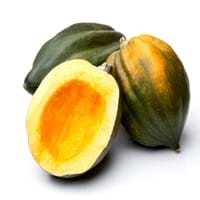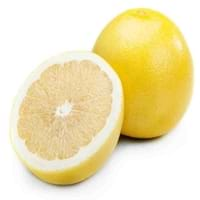Health Benefits
Anti-inflammatory properties, Arthritis treatment, Regulates Blood Sugar
Arthritis prevention, Asthma treatment, Cancer prevention, Kidney stone treatment, Liver health
General Benefits
Boosts immune system, Controls blood sugar levels, Digestive aid
Anti oxidant properties, Boosts immune system, Cures cough, Eye care, Fights against infections, Helps in weight loss, Improves eye vision, Maintains healthy cholesterol level, Treatment of common cold
Skin Benefits
Nourishes skin, Protects skin from oxidative stress
Anti-aging benefits, Brightens and lightens complexion, Reduces wrinkles, Treatment of dark spots
Hair Benefits
Prevents hair loss, Promotes longer and healthier hair, Regulates hair growth
Prevents hair loss, Protects hair, Regulates hair growth, Treatment of dandruff
Allergy Symptoms
Asthma, Red rash, Swelling of mouth, tongue or lips
Abdominal pains, Breathing difficulty, Decrease in blood pressure, Diarrhea, Dizziness, Eczema, Hives, Lightheadedness, Nausea, Runny nose, Sneezing, Swelling of mouth, tongue or lips, Vomiting, Wheezing
Side Effects
Diarrhoea, Vomiting
Allergic reaction
Best Time to Eat
Along with meal, As a snack in the late afternoon, Don't eat after meal, Eat the fresh ones, avoid mixing with any other foods, don't eat after meal.
As a snack in the late afternoon, Eat the fresh ones, avoid mixing with any other foods, don't eat after meal., Morning time (before lunch), Strictly avoid empty stomach
Vitamin B5 (Pantothenic Acid)
Vitamin C (Ascorbic Acid)
Vitamin E (Tocopherole)
Not Available
Vitamin K (Phyllochinone)
Not Available
Lutein+Zeaxanthin
Not Available
Calories in Fresh Fruit with Peel
Not Available
Calories in Fresh Fruit without Peel
Not Available
Calories in Frozen Form
Not Available
Type
Berry
Citrus, Tree fruit
Season
Winter
All seasons
Varieties
Bush Table Queen, Heirloom Table Queen, Festival Hybrid, Early Acorn Hybrid, Table Ace, Ebony and Cream of the Crop
Duncan, Marsh and Oro Blanco
Color
Dark green, Green-yellow, Orange green
White
Inside Color
Yellow
Creamy Yellow
Texture
Fibrous
Succulent
Origin
Central America, North America, Unknown
Barbados
Soil Type
Well-drained
Loam, Well-drained
Climatic Conditions
Cold, Sunny
Humid, Warm
Facts about
- It was named as Acorn Squash for its resemblance to a large ribbed acorn.
- It is said that squash was being grown in Mexico as long as 10,000 years ago.
- It was the first food cultivated by native American Indians.
- February is known as National Grapefruit Month.
- It is called as state fruit of texas.
- No mechanical devices are used while picking grapefruits, they are always handpicked.
Other Countries
Egypt, India, Iran, Italy, Mexico, Russia, Turkey, Ukraine, United States of America
Argentina, India, Israel, Mexico, South Africa, Sudan, Thailand, Turkey, United States of America
Top Importer
Costa Rica
Europe
Top Exporter
United States of America
United States of America
Botanical Name
Cucurbita Pepo
Citrus paradisi
Synonym
Winter Squash
Not Available
Subkingdom
Tracheobionta
Tracheobionta
Division
Magnoliophyta
Magnoliophyta
Class
Magnoliopsida
Magnoliopsida
Subclass
Dillenhidae
Rosidae
Order
Cucurbitales
Sapindales
Family
Cucurbitaceae
Rutaceae
Species
Pepo
C. × paradisi
Generic Group
Not Available
Citrus fruit
Difference Between Acorn squash and White Grapefruit
We might think that Acorn squash and White Grapefruit are similar with respect to nutritional value and health benefits. But the nutrient content of both fruits is different. Acorn squash and White Grapefruit Facts such as their taste, shape, color, and size are also distinct. The difference between Acorn squash and White Grapefruit is explained here.
The amount of calories in 100 gm of fresh Acorn squash and White Grapefruit with peel is 40.00 kcal and Not Available and the amount of calories without peel is Not Available and 33.00 kcal respectively. Thus, Acorn squash and White Grapefruit belong to Low Calorie Fruits and Low Calorie Fruits category.These fruits might or might not differ with respect to their scientific classification. The order of Acorn squash and White Grapefruit is Cucurbitales and Sapindales respectively. Acorn squash belongs to Cucurbitaceae family and White Grapefruit belongs to Rutaceae family. Acorn squash belongs to Cucurbita genus of Pepo species and White Grapefruit belongs to Citrus genus of C. × paradisi species. Beings plants, both fruits belong to Plantae Kingdom.









